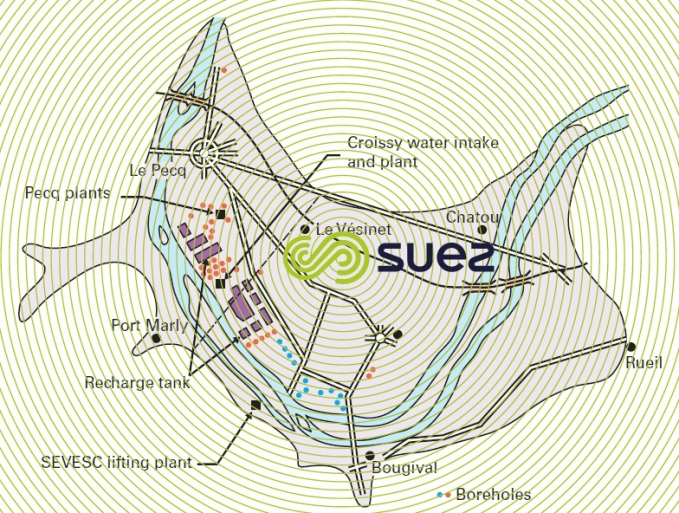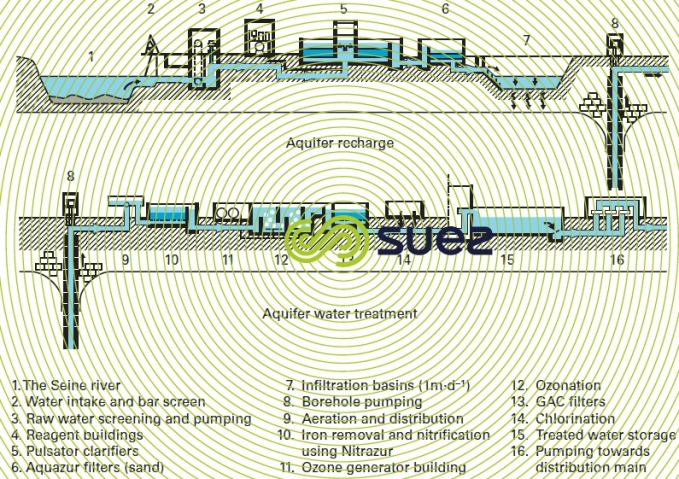artificial aquifer recharge
Reading time:Strictly speaking, this is not a special treatment system but merely a stage that can come: either upstream from conventional treatment (e.g. recharging the Dutch dunes aquifer with water from the Rhine) or between clarification and polishing (e.g. Croissy-sur-Seine, France).
This system will tend to be applied generally when re-using urban wastewater to produce drinking water because, as the water flows through the ground, this constitutes an additional barrier to biodegradable OM and to all bacterial contamination: this is often referred to as "indirect re-use". This can be an interesting technique for recharging an over-used aquifer without significantly altering the quality of the water, providing the UWW undergoes sufficiently thorough treatment (see section condensates); in coastal areas, it can also be applied to protect a good quality aquifer by preventing any salt water ingress while the aquifer is in use: this is known as an "anti-intrusion barrier".
This technique requires a geologically isolated water table that is supplied from a well-known natural source. The Croissy-sur-Seine, (France) aquifer is a good example (figure 17). The draining zone is made up of white senonian chalk, with fissures over a depth of several tens of metres and covered with recent alluvia (sand and gravel). It is fed naturally by:
- rainwater infiltrating through the geographical zone and its vicinity, infiltration that is increasingly declining due to urban development;
- water infiltrating from the Seine river.
The quality of this aquifer’s water will then be adversely affected by the polluted water in the Seine. Additionally, urban development has resulted in rising water demands: natural infiltration represents approximately 30·106 m3 per year whereas 50·106 m3 of water is pumped out per year. Therefore, artificial recharging will be required. Its aim is to both maintain the quality of the under-ground water by slowing down the direct input from the river and also to have a sufficient amount of water (storage effect) for meeting instantaneous demand.



consequences of aquifer recharging
This technique is used to:
- naturally eliminate all pathogenic micro-organisms and to reduce the assimilable OM content due to the biological barrier that develops on the base of the basins and because of percolation through the soil;
- ensure the availability of a large reserve of good quality water; the aquifer acts like a reservoir and recharging only takes place when the quality of the raw water is acceptable. Recharging is suspended if abnormal contamination occurs,
On the other hand, as the water travels underground, it becomes loaded with Fe, Mn and NH4 (aquifer in a reducing state) that have to be removed before the water can be polished and distributed.
Figure 18 provides a diagram of the entire line (clarification before re-infiltration and polishing after repumping).



maintaining recharge basins
When the head loss through an infiltration basin rises too high (biological barrier that has become too developed), the level will rise. The supply to this basin will have to be suspended until it dries out. After it has dewatered naturally, the surface barrier is removed and taken out of the basin. This operation has little effect on the mass of sand that protects the infiltration zone and the basin needs recharging with new sand only after several years of operation.
Bookmark tool
Click on the bookmark tool, highlight the last read paragraph to continue your reading later












